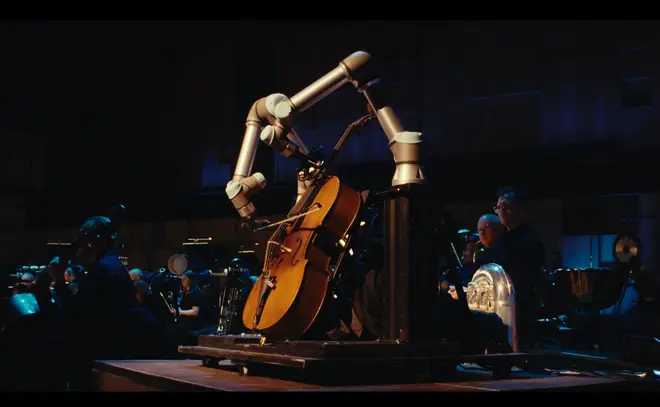A fascinating blend of technology and music has unfolded in Sweden, where a robot made its historic debut as a cello soloist alongside a symphony orchestra.
This breakthrough event took place during a performance led by Swedish composer Jacob Mühlrad at the Malmö Live Concert Hall.

This remarkable collaboration featured a robot developed by researcher and composer Fredrik Gran.
Unlike other automated musical instruments like self-playing pianos, this robot ventures into uncharted territory with its ability to perform the intricate art of cello playing.
Mühlrad expressed his intrigue and excitement about exploring how a robot could play a cello, emphasizing the unique anatomy of the robot as a stark contrast to a human musician.
The robotic arms, combined with bespoke programming of Mühlrad’s musical score, performed seamlessly with the orchestra.
The piece performed, named ‘Veer (bot)’, created a soundscape where the traditional acoustic melodies of the orchestra met the meticulously programmed notes of the robotic cellist, resulting in a powerful auditory and visual experience.
Mühlrad’s composition drew audiences into a reflective sound world where the synergy of man and machine emerged as a central theme.

This world premiere was a significant moment in music, showcasing an exciting frontier that classical music has traditionally not ventured—melding the mechanical precision of robotics with the emotive power of classical music.
Despite apprehensions about AI overshadowing human creativity, this project demonstrates the harmonious potential of technology complementing human artistry in music.
Mühlrad views this experiment not as a threat to human musicians but as an exploration of the boundaries of what a classical instrument can achieve when handled by a robotic performer.
He emphasized that this would not replace human cellists but offer new avenues for musical expression.
The robotic cellist will further its journey in music history by performing in the United States this December, promising to dazzle audiences and challenge perceptions of live performance.

As we embrace this technological marvel, it invites us to reconsider what it means to create and experience music in an age where artificial intelligence steadily integrates into artistic endeavors.
This groundbreaking event has not only made history but also opened the doors to new possibilities in the realm of live music, extending the reach and depth of emotional expression to new horizons. It is indeed a captivating time for innovation in symphonic music.
